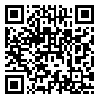BibTeX | RIS | EndNote | Medlars | ProCite | Reference Manager | RefWorks
Send citation to:
URL: http://jmed.ssu.ac.ir/article-1-216-en.html
Introduction: Students need acquiring self-directed learning readiness in order to enable to keep up to date their knowledge and professional competence after leaving the university. The aim of this study was to determine the capacity of current medical education system to create self-directed learning readiness for students.
Methods: In this cross-sectional study, self-directed learning readiness of 473 students of Rafsanjan University of Medical Sciences was surveyed by Fisher’s questionnaire. The total score above 105 indicated high, 60-105 moderate and less than 60 low level of self-directed learning readiness. Data was analyzed using SPSS software, correlation and simultaneous multiple regressions analysis was used.
Results: The mean and standard deviation of student’s self-directed learning readiness score was 17.17 ±55.83 with a minimum of 40 and maximum of 137. About 11% of students were in low, 80.1% in the moderate and 8.9% were in high level. There was no statistically significant correlation among students' self directed learning readiness score and demographic characteristics and academic achievement.
Conclusion: Medical universities should lead students toward acquiring self directed learning readiness by student-centered approaches.
Received: 2013/02/4 | Accepted: 2013/09/30 | Published: 2014/03/5
| Rights and permissions | |
 |
This work is licensed under a Creative Commons Attribution-NonCommercial 4.0 International License. |





